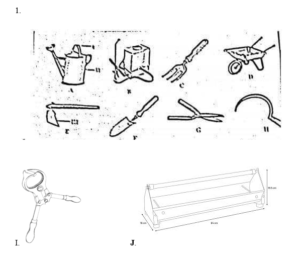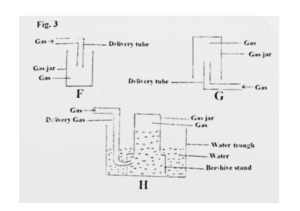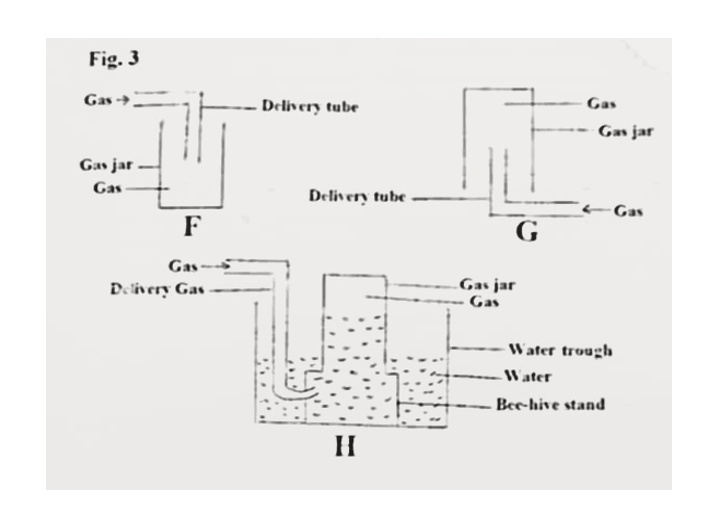SHS WASSCE MOCK INTEGRATED SCIENCE PAPER 3 PRACTICALS 001 Download
Candidate Name ………………………….. Index number ………………………………
WASSCE MOCK 2024
INTEGRATED SCIENCE 3
Test of Practical Work
2hours
INTEGRATED SCIENCE 3
TEST OF PRACTICAL WORK
[ 60 MARKS]
Directions to candidates
- Do not turn over this booklet until you are told to do so,
- In the spaces provided above insert your name, full index number, normal signature and the date of examination.
- Answer all the questions in this booklet.
- On no account should you tear any part of the booklet. The entire booklet will be collected at the end of the test.
- All rough work should be done in this booklet and then crossed out neatly. Under no circumstance should you work on any other paper.
- Write the NUMBERS OF THE QUESTIONS YOU HAVE ANSWERED in the order in which you have answered them in the spaces provided below;

- Identify each of the tool labelled A,B,C,D,E,F,G,H,I,J
- …………………………………………………………………………………………
- …………………………………………………………………………………………
- …………………………………………………………………………………………
- …………………………………………………………………………………………
- …………………………………………………………………………………………
- …………………………………………………………………………………………
- …………………………………………………………………………………………
- …………………………………………………………………………………………
- …………………………………………………………………………………………
- State one use each of the tool labelled A, B, C, D, E, F, G, H, I, J
- ………………………………………………………………………………………
- ………………………………………………………………………………………
- ………………………………………………………………………………………
- ………………………………………………………………………………………
- ………………………………………………………………………………………
- ………………………………………………………………………………………
- ………………………………………………………………………………………
- ………………………………………………………………………………………
- ………………………………………………………………………………………
- ……………………………………………………………………………………
- Name the Parts labelled I, II and III
- ………………………………………………………………………
- ………………………………………………………………………
- ………………………………………………………………………
- State two ways of maintaining tool E
i……………………………………………………………………………………………………………………………………………………………………
ii……………………………………………………………………………………………………………………………………………………………………..
- The Figure below is an illustration of a section through an organ in the human body. Study the figure carefully and answer the questions that follow.

- (i) Name the organ illustrated
…………………………………………………………………………………
(ii) In which system of the human body is this organ a part of?
…………………………………………………………………………………………
(iii) State the function of the organ illustrated above
……………………………………………………………………………………………………………. ……………………………………………………………..
[3 marks]
- Name each of the parts labelled I,II,III,IV,V,VI,VII,VIII
- ………………………………………………………………………………
- ………………………………………………………………………………
- ……………………………………………………………………………
- ………………………………………………………………………………
- ………………………………………………………………………………
- ………………………………………………………………………………
- ………………………………………………………………………………
- ………………………………………………………………………………
[8 mark]
- Which of the labelled parts carry;
- Oxygenated blood;
…………………………………………………………………………………
- Deoxygenated Blood?
…………………………………………………………………………………
[4 marks]
- State one;
- Structural difference between the parts labelled VII and VIII
…………………………………………………………………………………
…………………………………………………………………………………
- Functional difference between the parts labelled VII and VIII
…………………………………………………………………………………
…………………………………………………………………………………
[2 marks]
- State the function of the part labelled VI
………………………………………………………………………………………………… ………………………………………………………………………………..
[1 mark]
- The figure below is an illustration of three different methods labelled F, G, and H for collecting gases in the laboratory after preparation.
Study the illustration carefully and answer the questions that follow.

- Name each of the methods labelled F, G, and H
- ……………………………………………………………………………..
- ………………………………………………………………………………..
- ………………………………………………………………………………….
- b) Mention two gases each which can be collected using each of the methods named in (a)
F…………………………………………………………………………………………
…………………………………………………………………………………………
G………………………………………………………………………………………………
………………………………………………………………………………………….
H…………………………………………………………………………………………………………………………………………………………………………………………………………………………………………………………………………….
(C) Give a reason for naming the gases for each of the methods mentioned in (b)
………………………………………………………………………………………….
………………………………………………………………………………………….
……………………………………………………………………………………….
…………………………………………………………………………………………
……………………………………………………………………………………….
………………………………………………………………………………………….
(d) Describe briefly a chemical test for one of the gases mentioned for the methods labelled F
……………………………………………………………………………………………….
……………………………………………………………………………………….
………………………………………………………………………………………………………………………………………………………………………………………….
……………………………………………………………………………………………….
- Fig. 4a illustrates an experimental setup to compare the height of an object with image formed by a pin-hole camera. The Object height, d, is placed in front of a pin-hole camera and the height, h, of the image produced on a screen was measured. The Experiment is repeated for four more objects of different heights as shown in the diagram.

Fig.4b shows the heights d = d1, d2, d3, d4 and d5 of the object and the corresponding image heights h = h1, h2, h3, h4 and h5
- Measure and record the raw object heights d = d1, d2, d3, d4 and d5
- Convert the raw object heights to real object heights D = D1,D2,D3,D4 and D5 using the scale provided.
- Measure and record the raw image heights h = h1, h2,h3,h4 and h5
- Convert the raw image heights to actual heights H = H1,H2,H3,H4 and H5 using the scale provided
- Tabulate the results as shown below.
| Raw object height (d) /cm | d1 = | d2 = | d3 = | d4 = | d5 = |
| Actual object height ( D) / cm | D1 = | D2 = | D3 = | D4= | D5= |
| Raw image height (h) /cm | h1 = | h2 = | h3 = | h4 = | h5 = |
| Actual Image height (H) / cm | H1 = | H2 = | H3 = | H4 = | H5 = |
Plot a graph with actual image heights (H) on the vertical axis and the actual object heights (D) on the horizontal axis. Graph is on Next Page
- Determine the slope of the graph
………………………………………………………………………………………….
……………………………………………………………………………………………………………………………………………………………………………………
Graph is on Next Page
Download A Copy
GET MORE FILES FROM OUR CHANNEL
| File Name | SHS WASSCE MOCK INTEGRATED SCIENCE PAPER 3 PRACTICALS 001 Download |
| File Size | Small |
| Download Link | Click here to Download |
| Marking Scheme to Download | Loading |
